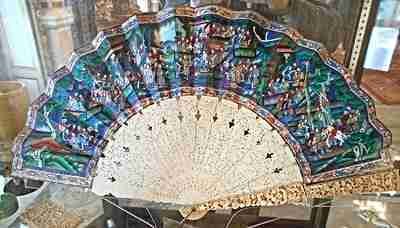Chinese Defence Minister General Liang Guanglie visited India from September 2 to 7, 2012, at a rather short notice of a month. His delegation included Yang Jinshan, commander of the Tibet military district bordering India, where instability is reported to have increased during the change of Chinese leadership, with 51 Tibetans immolating themselves in protests against Beijing’s suppressive rule in the region.
While this visit coincides with Beijing grappling with a change of leadership and unprecedented diplomatic turbulence with countries in the South China Sea region, it also follows a diplomatic low with India over some issues, despite booming and trade touching an annual $75.5 billion from $3 billion a decade ago but considered to be much in China’s favour. One purpose of Gen Guanglie’s tour, no doubt is reviving military exercises, stopped by India after China’s stapled/refused visas.
This visit also came a month short of the completion of 50 years since the Chinese Aggression of October 1962, two years after India gave asylum to the Dalai Lama, considered by Beijing as not only an unpardonable separatist but also a veritable red rag to a bull. Much water has flowed down the Tsangpo- Brahmaputra river in India’s Northeast and the Indus in India’s North and North West over these 50 years. A glimpse at them is relevant.
The Chinese outlook
The Chinese build-up and incursions with the release of maps in the early 1950s brought to the notice of then Prime Minister Jawaharlal Nehru by Indian Army’s top brass were trashed by him based on his belief in Panchsheel and Hindi Chini Bhai Bhai (India, China, like brothers) which ironically amounted to ‘bye-bye’ with the 1962 Chinese Aggression. According to Achamma Chandersekaran, niece of Major TP Francis, an expert in 29 languages, who was one of the official interpreters during Zhou En Lai’s visit to India in 1962, did not agree with the interpretation that others gave.
He predicted that China would attack India in six months. With nobody in the government, including Nehru, who met him, willing to go along with his interpretation, Major Francis resigned in protest. China did indeed attack India within six months. Indan Army lost 1,860 personnel, everything from potatoes to postage became dearer, Nehru was a broken man and then Defence Minister VK Krishna Menon was at long last sacked.
As expressed in Parliament by Pranab Mukherjee, when he was External Affairs Minister, there is no clearly defined boundary separating China and India. Mukherjee then stated, “China illegally claims approximately 90,000 sq km of Indian territory in Arunachal Pradesh and about 2,000 sq km in the middle of the India-China boundary.” China also controls 38,000 sq km of territory India claims in Jammu-Kashmir.

You cannot beat the Chinese for their contradictions — often with their sense of timing — and their combinations, quite akin to their culinary basics of sweet and sour. In the sixty years old Sino-Indian relationship, Chinese diplomatic niceties have often been in tandem with forward military moves on the ground and pop-up reminders of their cartographic claims.
If former Prime Minister AB Vajpayee’s visit to Beijing in 2003 was timed with a Chinese patrol coming at least 16 kms inside India and intimidating an Indian detachment, Premier Wen Jiabao’s visit was timed with the Chinese blasting the last bit of the strategic 3.3 km-long Galong La tunnel linking isolated Metok in Tibet Autonomous Region, bordering Arunachal Pradesh to China. Intrusions by PLA in August 2009, happened during the working group’s negotiations at New Delhi, followed by the visit of former Army Chief General VK Singh, then GOC-in-C Eastern Command, to Beijing and for the first time, Lhasa, the capital of Tibet.
The Indian way
After the humiliating Chinese Aggression in 1962 (because of India’s political leadership refusing to admit Chinese intentions, not allowing Indian Army to prepare/re-equip, not using Indian Air Force-all owing to too soft a policy/lack of political will) there were a large number of incursions culmination into violent attacks by PLA at Nathula and Chola in Sikkim in September and October 1967. Indian Army’s aggressive retaliation in 1967 least broke the 1962 jinx and may also have resulted in Chinese stepping down after build-up of tension and stand-off at Sumdorong Chu Valley in Arunachal Pradesh in 1984 and 1987.
Thereafter, the first major step forward was Rajiv Gandhi’s pathbreaking visit to China in 1988. This was followed by other high-level visits on both sides. His successor, PV Narasimha Rao took the process forward and in September 1993 signed the Treaty of Peace and Tranquility between the two countries, which also signified India quietly accepting the loss of 90,000 sq km of its territory. While this agreement ended the ‘eyeball to eyeball’ confrontation and soon after, in 1994, late General BC Joshi became the first Indian Army Chief to visit China.
While his visit was a success, it did not stop the Chinese from continuing to enter Indian territory “looking for herbs” — a favourite excuse — or deploying surveillance stations all around India as its ‘string of pearls’ strategy, or targeting it with their nuclear warheads, also substantially supplied ‘by private arrangement’ to Pakistan.
The way tension prevails by repeated provocation by frontline PLA troops, there can be no guarantee of the odd moment when some soldier’s patience snaps and firing is resorted to.
While so far, the only saving grace of the peace and tranquillity agreement is that despite the intrusions, there has been no exchange of fire from either side. But the way tension prevails by repeated provocation by frontline PLA troops, there can be no guarantee of the odd moment when some soldier’s patience snaps and firing is resorted to.
Three sectors of the LAC are western (Ladakh), middle (Uttarakhand, Himachal) and eastern (Sikkim, Arunachal), Arunachal. While incursions in Aunachal Pradesh and Sikkim were considered routine, the ones in Jammu and Kashmir’s (J&K) Ladakh region since 2009, particularly when seen in the light of decades old anti-India based Sino-Pak relationship and joint military exercises, like Stride 2009, conducted in China’s northwest Ningxia Hui Autonomous Region, at an unprecedented level of 50,000 troops and aiming to test its long-distance mobility, is certainly a cause for concern.
Earlier, the China Study Group meeting to discuss the fallout of Chinese incursions/violations of air space/air dropping of expired tinned food/painting of rocks and other issues, was postponed. While no reason was stated officially, off-record it came to be known that it was media phobia.
The slow brew
Although not a single Chinese bullet has been fired at Indian troops since the Nathu La confrontation of 1967, China has kept the 4,057-km LAC live with incursions. Beginning with Finger, the northern-most point as named by Indian Army in Sikkim (which was accepted as India’s and affirmed during Vajpayee’s 2003 visit), by May 2010, motorised foot and amphibious armed patrols of the People’s Liberation Army (PLA) intruded into the strategic Trig Heights and Pangong Tso lake in Eastern Ladakh, bringing the figure of transgressions to thirty in Trig Heights itself and thereby signifying a quantum jump up to 52 per cent from 27 per cent in 2009.

Another major cause of worry is the construction of airfields, roads, railway lines and strategic link-up of Kashghar, in Pakistan with Havelian in Pakistan Occupied Kashmir (POK) and ultimately with Tibet’s Medong region bordering Arunachal. Also worrying are China’s efforts to bolster surveillance capability by constructing border outposts (BOPs), which at places, can also be used for directing precision-guided munitions (TV guided cruise missiles, terrain guided missiles like — KH59 MK II, which has a range of over 1200 km) — all of which have the potential to substantially alter the strategic balance in favour of China.
The path ahead
In 2000, Arunachal Pradesh Chief Minister Mukut Mithi accused China of violating the LAC and crossing into Indian territory near the Kayela Pass in the state’s Dibang Valley district, bordering Tibet. “They come in the guise of hunters, cross the LAC and at times even claim that parts of Arunachal belong to them,” he had said.
In May 2007, Kiren Rijiju, former Member of Parliament, from Arunachal Pradesh made a startling claim that China had moved 20 km into the Indian territory, amounting to 9,000 sq km. “It has been continuing for a long time… I have written to government of India and raised the issue in the Parliament. The government of India is not accepting the incursion openly,” said Rijiju but claimed that Ministry of External Affairs had admitted to Chinese occupation of Arunachal Pradesh. Around 140 incursions reportedly occurred in 2007.
Over the past 65 years, Indian policy on China has been quite weak. Former Prime Minister Indira Gandhi was the only one who advocated a tough stand on China. During the 1967 Nathu La flare-up, she even sanctioned the use of artillery, at the request of the then brigade commander, Brig MMS Bakshi, MVC. Differences between the Chogyal of Sikkim and those seeking a union with India finally led to the total collapse of the administration, and the government that came in subsequently decided to become the 22nd state of India on May 16, 1975.
Some assertive steps taken in the recent past are the replacement of MiGs in Tezpur (Assam), with Sukhoi multi-role jet aircraft, reactivating about forty airstrips, raising of two more mountain divisions and some battalions of Arunachal Scouts as a signal to the Chinese to stay off Arunachal Pradesh, which China claims as its own. India also reportedly raised the budget to the Dalai Lama from `10 million to `100 million.
Despite 15 rounds of high-level talks to resolve the dispute about each other’s perceptions of the LAC, neither side is close to giving up any territory.
Gen Guanglie reportedly said both sides reached a very important consensus to promote friendly, strategic and cooperative partnership further, besides promoting friendly exchanges and cooperation between the two armed forces “in various fields, including the exchange of high-level visits, the exchange of young officers and also the exchange of personnel training, intercollegiate exchanges in non-traditional security fields including cooperation between the two navies and maritime security cooperation,” as he specified. AK Antony described his discussions with his Chinese counterpart as very fruitful “on improving the relationship between our two countries, improving the relations at the border areas and also we covered a lot on the situation in South Asia, Asia-Pacific region.”
Despite 15 rounds of high-level talks to resolve the dispute about each other’s perceptions of the LAC, neither side is close to giving up any territory. Recently, India’s ambassador to China was allowed to tour Tibet, a rare occurrence, and an Indian military delegation was taken to the region’s capital Lhasa. Visits, talks and trade may well be pursued but must not allow New Delhi being lulled into complacency as the Chinese threat against India is very real and all-encompassing.


